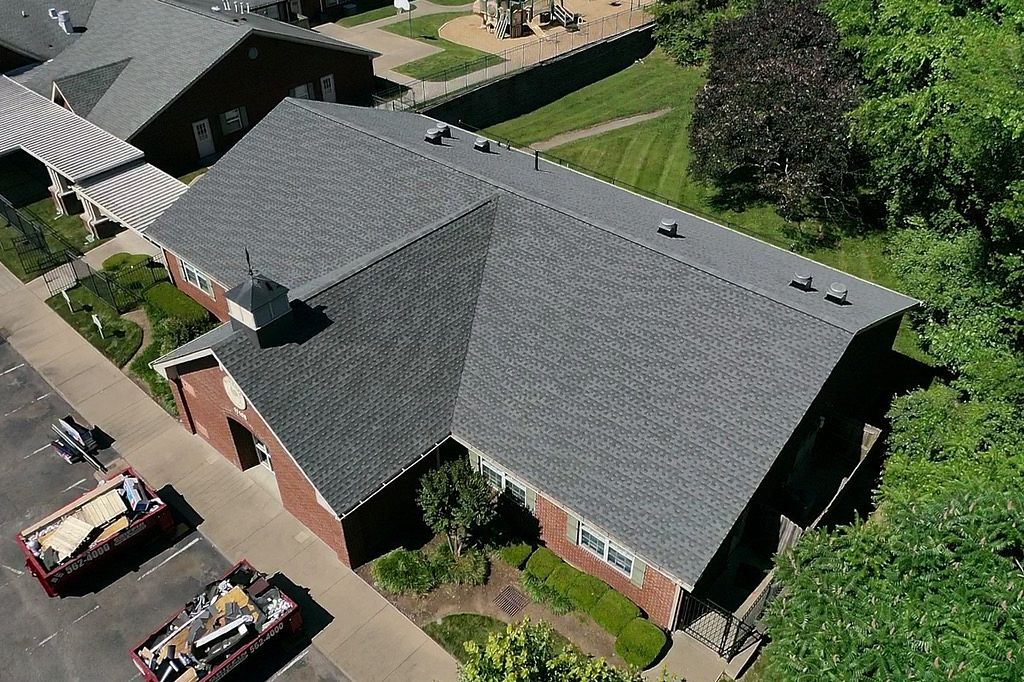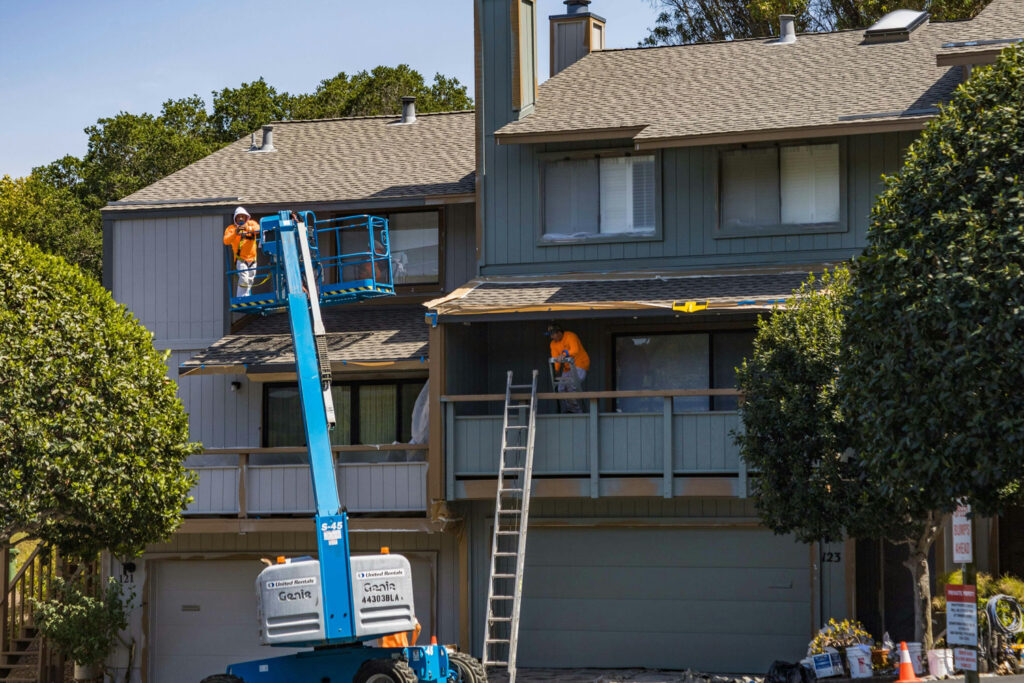Why Insurance Denies Roof Claims and How We Fight Back
You paid your premiums. You expected protection.
But now that your roof is damaged, your insurance company says “no.”
If you’ve recently filed a roof claim and got denied, or were offered a payout that doesn’t come close to covering replacement costs, you’re not alone.
Insurance companies deny roof claims every day for reasons that often leave homeowners frustrated and stuck with expensive repairs. Sometimes it’s buried in the fine print. Sometimes it’s “wear and tear.” Sometimes they just hope you’ll give up.
But we don’t.
In this guide, we’ll explain exactly why insurance denies roof claims and show you how to get insurance to pay for roof replacement, even after an initial denial.
Denied or Delayed? Why Roof Insurance Claims Often Hit a Wall
Homeowners file thousands of property damage claims each year, and not all of them end in a check.
In fact, only 5.5% of insured homes had a claim in 2022, and among those, many encountered pushback over what was actually “covered.” So why do so many roof claims get delayed, short-changed, or outright denied?
Here are some of the most common reasons:
1. Insurance says it’s “wear and tear,” not storm damage.
One of the top reasons claims get rejected is the insurance company blaming age or deterioration, not the storm. Roofs over 20 years old are especially at risk of being written off as too worn to qualify. Even when damage is caused by high winds or hail, insurers may argue your roof was already failing.
2. Improper or missing maintenance records.
If you haven’t kept up with routine maintenance (like clearing gutters, checking flashing, or fixing previous minor leaks) your claim may get tossed. Insurance companies expect proof that your roof was in good shape before the storm. Without it, they may argue the problem was avoidable.
3. Filing the claim too late.
Every policy has a window for reporting storm damage, sometimes as little as 6 to 12 months. If you wait too long to report the issue, you risk missing your shot entirely. Insurance companies may say the damage got worse over time or can’t be tied to a specific event.
4. Not enough evidence.
You can’t just say “there was a storm.” You need photos, dates, contractor reports, and in some cases, weather data. According to recent stats, only 47% of homeowners prepare an inventory or document their belongings. The same lack of preparation hurts roof claims too, especially when insurers question the cause.
5. Disputes over scope and cost.
Even when your claim is accepted, many insurance companies leave off necessary items like flashing, underlayment, or ventilation. From 2018 to 2022, the average property damage payout was just under $16,000, but full roof replacements often cost much more, especially for larger homes or those with code upgrades. That gap often leaves homeowners on the hook, unless they supplement or dispute the estimate.
And here’s the biggest challenge:
Wind and hail accounted for over 40% of property claims in 2022, yet many insurers still drag their feet or underpay on these cases. As weather events grow more extreme, and premiums keep rising, more homeowners are feeling the gap between what they’re promised and what they’re paid.
How to Get Insurance to Pay for Roof Replacement
Insurance claims are won with proof. If you want to know how to get insurance to pay for roof replacement, start by collecting the right documentation the moment you spot damage.
1. Take clear photos
Start from the ground. Use your phone or camera to take wide shots of your home, then zoom in on anything that looks suspicious, such as missing shingles, fallen branches, visible dents. If you have a drone, even better. Avoid climbing on the roof unless you’re trained or insured to do so.
2. Look beyond the roof
Wind and hail don’t just damage shingles. Check your gutters, downspouts, siding, garage doors, window screens, and even your AC unit. Small dings or dents in metal can be strong evidence that a storm caused damage.
3. Write down the date and storm details
If there was a storm recently, note the date and save any local news, weather alerts, or radar screenshots. This helps show that your roof damage lines up with a real event.
Also, keep in mind that photos have built-in metadata, details like the date, time, and even GPS coordinates of when and where they were taken. This hidden data can serve as extra proof if your insurance company questions the timing of the damage. Just make sure you don’t edit or crop the originals before submitting them.
4. Don’t delay
Even if your roof looks fine from a distance, unseen damage can get worse fast. Waiting too long could weaken your claim, or void it completely due to your policy’s reporting window.
When in doubt, call a trusted roofing contractor. They can inspect the damage safely, document it professionally, and help you take the next step with confidence.
Know Your Policy Inside and Out
Before you file a claim (or even think about repairs) it’s important to know exactly what your policy covers. The two most common types of roof coverage are ACV and RCV, and the difference can cost you thousands.
Actual Cash Value (ACV)
If your policy is ACV, the insurance company pays for your roof’s current value, not what it costs to replace it today. That means depreciation is subtracted based on your roof’s age. A 15-year-old roof? You’ll only get a fraction of what it costs to replace it.
Replacement Cost Value (RCV)
With RCV, your insurer pays the full cost to replace your roof with a similar one, minus your deductible. Typically, you get one check upfront (the depreciated value), and a second check after the new roof is installed and documented.
Other things to check in your policy:
- Deductibles. Some policies have higher deductibles for wind or hail claims. Know how much you’ll need to pay out of pocket.
- Age restrictions. If your roof is over 20 years old, some insurers reduce coverage or deny claims entirely.
- Material exclusions. Certain materials, like wood shake, may not be fully covered or could require special add-ons.
Reading through your policy may feel like reading another language, but don’t worry, your contractor or agent can help explain the fine print before you file anything.
Why You Need a Roof Inspection Before Filing
One of the best moves you can make before filing a claim is to get a professional roof inspection. Here’s why that step matters more than you might think.
1. Contractors know what to look for
Experienced roofing contractors can spot damage that’s easy to miss: granule loss, hidden leaks, or hail bruising that hasn’t caused a leak yet. They also know how to look for code violations or other upgrades your insurance should cover.
2. Adjusters sometimes miss things
Insurance adjusters aren’t roofers. While many are trained to look for storm damage, they might overlook subtle signs or downplay the scope of the work needed. When your contractor is involved early, they can walk the roof with the adjuster and make sure nothing gets skipped.
3. Inspection reports strengthen your claim
A detailed inspection with labeled photos and professional notes can make your case stronger. It shows the damage is real, recent, and related to a covered event.
Getting this done before filing your claim also gives you a chance to weigh your options. If there’s not enough damage to meet your deductible, you might choose to wait. If the damage is serious, you’ll be ready to file with proof in hand.
What to Do If the Insurance Estimate Falls Short
So you got your insurance estimate, but it barely covers the basics.
Now what?
This is more common than you think. Insurers often leave off important line items or underestimate the real cost of the work. That’s where the supplementing process comes in.
What is supplementing?
Supplementing means comparing the insurance estimate to your contractor’s actual scope of work and submitting a request for missing items. Think of it as a polite but firm correction, backed by proof.
What’s usually missing?
Some of the most common omissions include:
- Flashing
- Drip edge
- Ice and water shield
- Ridge vents
- Code-required upgrades
- Overhead and profit (especially for complex jobs)
How Bluebird Roofing Helps You Push Back on Insurance
At Bluebird Roofing, we review your insurance estimate line by line and point out anything they missed, such as roofing materials, gutters, downspouts, and more. If something’s left out or undervalued, we help you request a revised estimate with the right documentation.
We know how to talk to insurance adjusters and back up what we see with photos, measurements, and expert insight. Our team handles the back-and-forth with the carrier and makes sure the scope of work actually matches the damage to your home.
You’re still the one who submits the request, but we guide you through every step and make sure nothing gets overlooked. It’s how we’ve helped thousands of homeowners get the repairs they deserve without surprise out-of-pocket costs.
Book Your No-Cost Roof Inspection With Bluebird Roofing
Denied, delayed, or underpaid? We don’t just accept it, we fight back.
Our roofing experts know the tricks insurance companies use to avoid full payouts, and we know how to push back with proof.
You paid for coverage. We make sure you get it.
At Bluebird Roofing, we don’t let insurance companies call the shots when your roof is on the line. Our team knows how to document damage, push back on lowball estimates, and get homeowners the full roof replacement they’re owed.
Contact us now to schedule your complimentary evaluation and let’s start building your case the right way.



